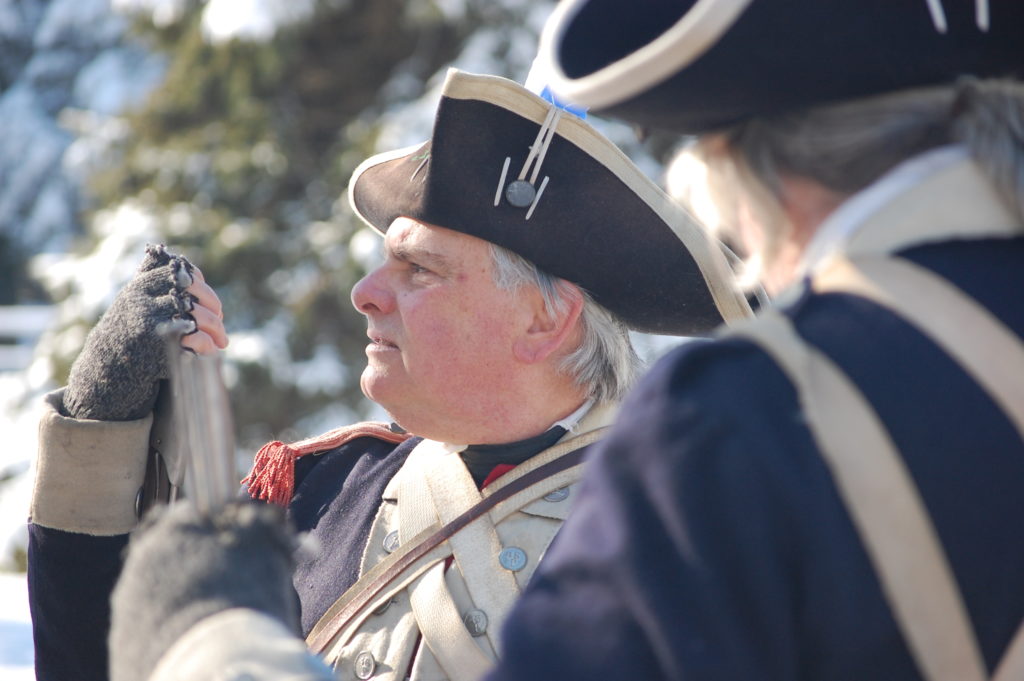
You’ve probably heard that two Continental Army brigades were supposed to complement George Washington’s troops from the south at the Battle of Trenton. These brigades are fairly well-remembered, largely because of their absence—weather conditions prevented them from joining Washington’s troops.
So it may come as a surprise to hear that Washington’s strategy called for five separate crossings of the Delaware River on December 25, 1776.
Shortly after Washington arrived at McConkey’s Ferry, he learned the British were dividing the Hessian troops among several garrisons throughout New Jersey. The largest, with around 8,000 British and Hessian soldiers, was in the vicinity of Princeton. By contrast, only 1,400 were designated for Trenton.
That’s where Washington saw the opportunity to claim his elusive first victory in battle, according to Thomas Maddock II, a historical interpreter at Washington Crossing Historic Park. “He developed a plan that entailed up to five total crossings, all of which would take place on December 25, 1776,” Maddock says.
Captain William Washington (a cousin of George Washington) and Captain John Flahaven were to lead two 40-man parties across the Delaware hours before the main army at McConkey’s Ferry began its departure. James Monroe, who was at the time an 18-year-old lieutenant, volunteered to join Captain Washington. Upon their arrival in New Jersey, they were to travel a slightly more interior route, along Pennington Road, to Trenton, where they were to block any communication between the Trenton and Princeton cantonments.
There is some uncertainty as to whether Monroe crossed at Coryell’s Ferry or McConkey’s Ferry. What is agreed upon is that Monroe fought in the Battle of Trenton. He carried in his shoulder the musket ball that hit him until his death in 1831.
South of McConkey’s Ferry, Brigadier General James Ewing and Colonel John Cadwalader were designated by Washington to lead their brigades across the river into New Jersey. Ewing was to block the bridge over Assunpink Creek in Trenton; Cadwalader was to hold off Hessian reinforcements from the Mount Holly cantonment.
There was also some hope that General Israel Putnam could lead another crossing from Philadelphia and join the South Jersey militia south of Mount Holly. But Cadwalader was likely counted on more than Putnam.
However, a massive build-up of ice in the river prevented Ewing and Cadwalader from crossing. Cadwalader managed to get 600 men to the New Jersey bank, Maddock says, but when they couldn’t get their cannon across the river, they retreated. Putnam was supposed to reinforce Colonel Samuel Griffin as a diversion, but Griffin was very ill, and many of his men had returned to New Jersey.
Washington received word from Joseph Reed about the icy river conditions at Neshaminy Ferry, where Cadwalader was supposed to have crossed. In response, Washington wrote to Cadwalader and told him that if he was unable to cross, he was to make as great a diversion as possible.
“But Cadwalader, according to most accounts, didn’t do it,” Maddock says. “It was a complex battle plan that came apart quickly. But the Hessians missed opportunities that contributed to their loss at Trenton.”
One account speculates it was because the Hessian soldiers believed their stay in Trenton was going to be short-lived.
“Colonel Johann Rall, the Hessian commander at Trenton, was also very arrogant,” Maddock says. “After defeating Washington five straight times over the preceding months, Rall, who died in the Battle of Trenton, was widely considered to have viewed the Americans as not much of a threat.” That opinion was held by most of the British and Hessian commanders at the time.
While Rall was warned, and he refused to build redoubts for defense, he did request enforcements. British General William Leslie sent troops on two separate occasions from Princeton. British General James Grant, in Brunswick, believed Rall was overreacting, writing, “Tell the Colonel he is safe.”
Ultimately, the disagreement within the British and Hessian forces concerning the danger to the Trenton outpost and how to address it was probably one of the primary causes for the outpost being unprepared for Washington’s attack.

